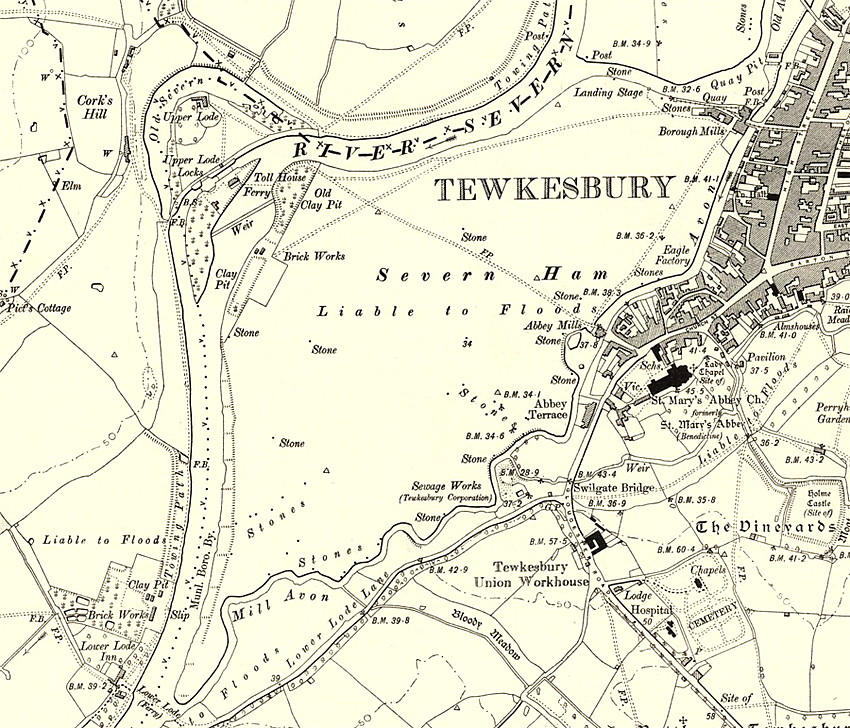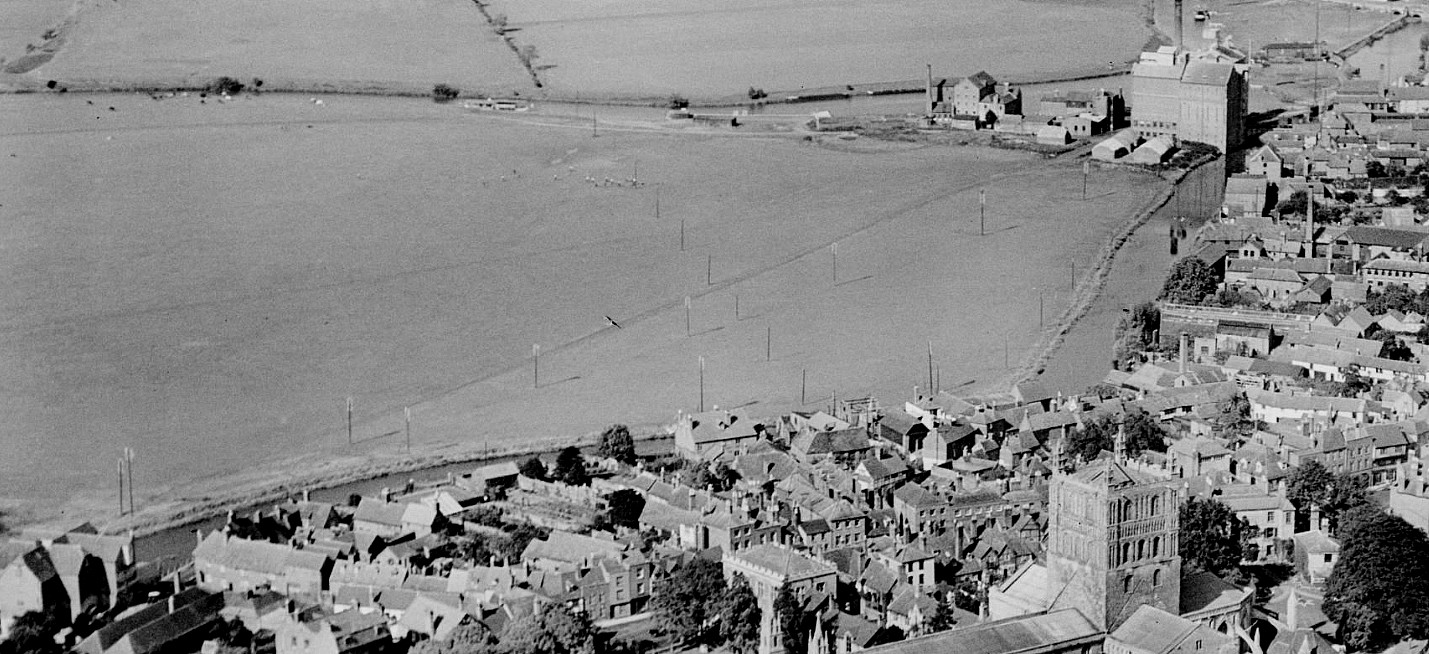Tewkesbury
Note: This map only shows the position of Tewkesbury town within the UK.
TEWKESBURY see also PUCKRUP HALL HOTEL
TEWKESBURY: Temporary aerodrome
Note: This scan of an advert, published in the Gloucestershire Echo on the 24th April 1922, was kindly provided by Mike Holder. The venue called the "Regatta Field" is more generally known today as the SEVERN HAM.
Operated by: Berkshire Aviation Co
Location: The SEVERN HAM, just W of Tewksbury town centre
Period of operation: From the 19th to the 30th April 1922
THE SEVERN HAM
Location: Just W of Tewkesbury town centre
NOTES: The site for Alan Cobham’s 1929 Municipal Aerodrome Campaign. TEWKESBURY was the 76th venue for this Tour, on the 10th September.
Starting in May and ending in October, one hundred and seven venues were planned to be visited. Mostly in England but with two in South Wales and eight in Scotland. However, due to a couple of crashes and other setbacks, he eventually managed 96 venues - which of course was still a magnificent achievement.
The aircraft he mostly used was the ten-seater de Havilland DH.61 'Giant Moth' G-AAEV named 'Youth of Britain'. The punishing schedule he set for himself seems astonishing today. Highly recommended are his memoirs in 'A Time To Fly'. The "anonymous donor" mentioned in the newspaper article below, who had offered to pay Cobham for some 10,000 flights for schoolchildren, we now know was Lord Wakefield of Castrol Oil fame.
A MICHAEL T HOLDER GALLERY
Note: The newspaper advert was published in the Tewkesbury Register on the 7th September 1929. Note the stout telegraph poles capable of withstanding the common winter floods.
Note: The newspaper article was published in the Gloucester Citizen on the 10th September 1929. The same day as Cobham's visit!
Note: The last picture shows the footpath and bridge, next to the mill, which enabled the local people to gain access to the SEVERN HAM. The 1945 picture shows the 'anti-invasion' ditches that had been dug out.
In the newspaper article above, Sir Alan commented that this was one of the best Landing Grounds he had visited. Clearly having no idea that during the winter months, and into the spring period, it can be subjected to serious flooding. Hardly ideal for an aerodrome! Indeed, much if not most of the River Severn valley is subject to serious floods, and has been for very many centuries. As can be seen in the picture I took in February 1995, the SEVERN HAM, at the top of the picture, is all under water.
On the 7th June 1935 the main Cobham Tour that year, before it split into two Tours, again visited Tewkesbury. Using the same site? I have to say that because of weather and other constraints I’m sceptical that these 1930s Tours by the Cobham Tours and others always managed to display day after day for month on end, according to their set itinerary but can anybody confirm they did? The evidence seems to show they mostly did.
Cobham was a workaholic and set a relentless schedule for his pilots and ground crews - which seems incredible today - with very few rest days. And yet, despite this, the safety record was, it appears, remarkably good. This must surely prove a point regarding determination to achieve a goal, especially if shared, can go a long way to overcoming fatique?
Michael T Holder
This comment was written on: 2020-05-21 14:15:15From the Gloucester Citizen Tuesday 10 Sep 1929 - Sir Alan Cobham's plane came gracefully to earth on the Ham at 11:20. This will be the Severn Ham on the south west of the town and can be seen on Britain from Above - EAW049071 ENGLAND (1953). The town, Tewkesbury, from the south-west, 1953.
We'd love to hear from you, so please scroll down to leave a comment!
Leave a comment ...
Copyright (c) UK Airfield Guide


























